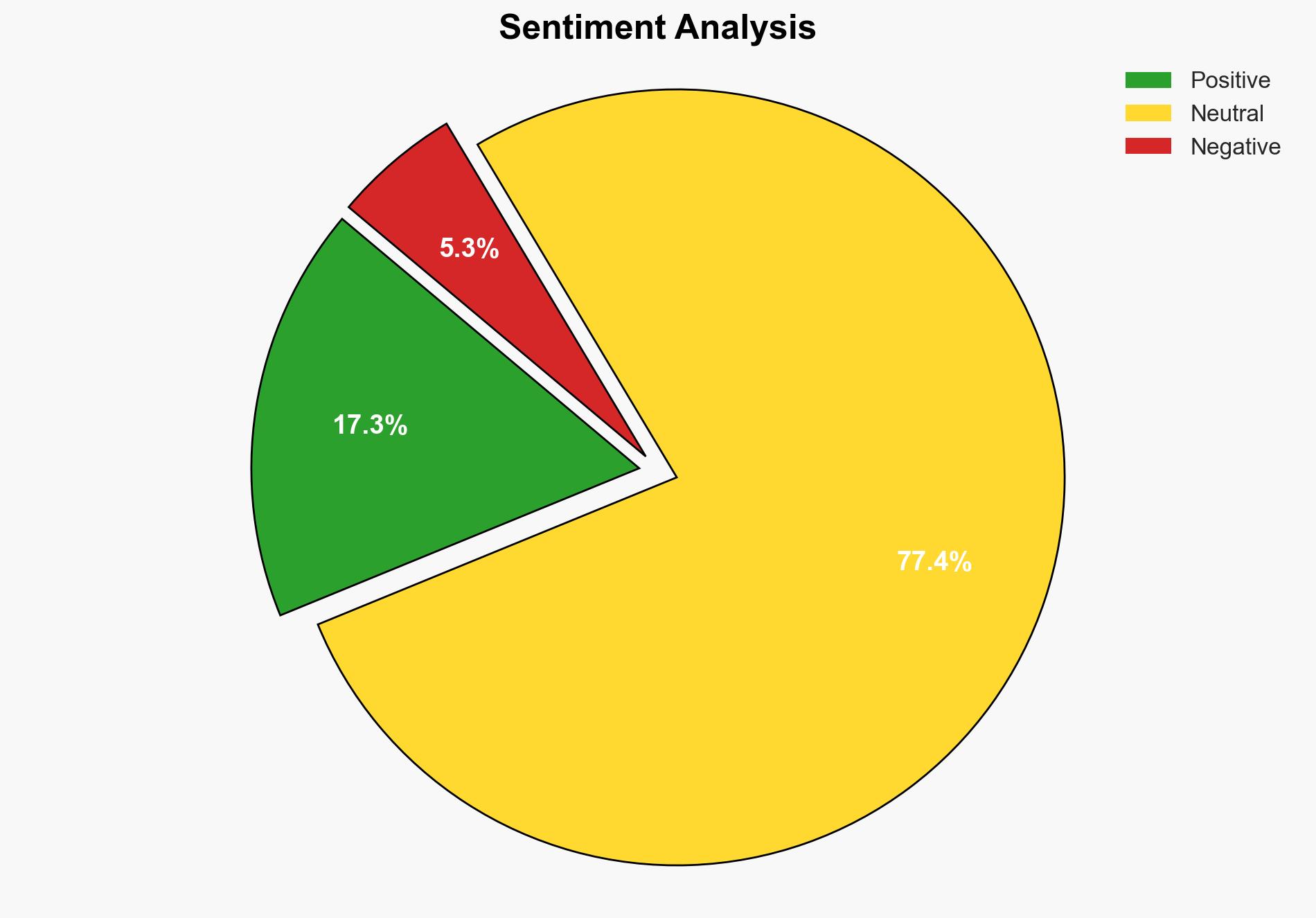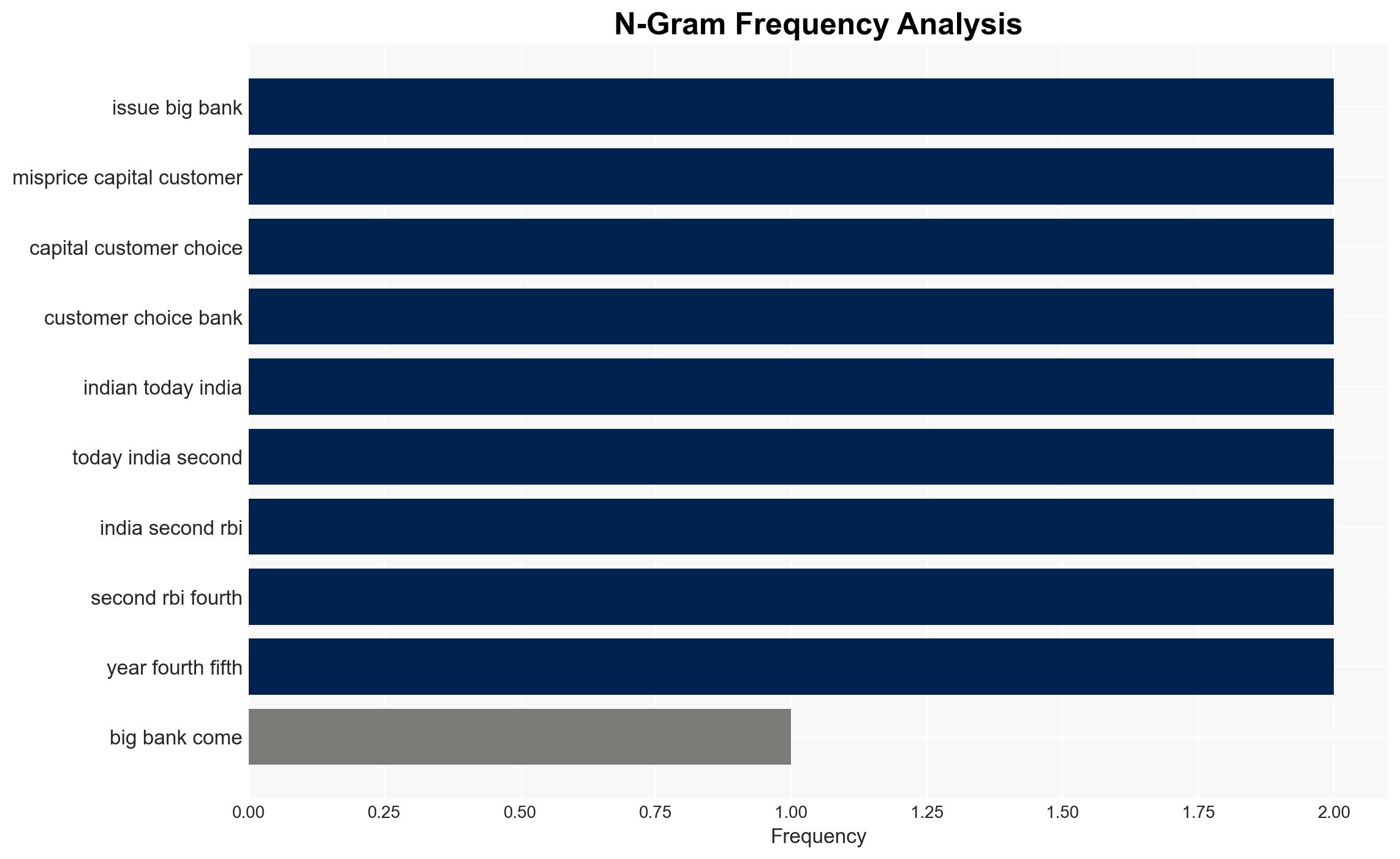Pros and cons of a big bank push – BusinessLine
Published on: 2025-11-19
AI-powered OSINT brief from verified open sources. Automated NLP signal extraction with human verification. See our Methodology and Why WorldWideWatchers.
Intelligence Report: Strategic Analysis of a Big Bank Push in India
1. BLUF (Bottom Line Up Front)
With a moderate confidence level, the hypothesis that the creation of larger banks in India will enhance economic integration and global competitiveness is more supported. However, this comes with significant systemic risk and regulatory challenges. It is recommended to proceed with cautious expansion, emphasizing robust regulatory frameworks and risk management systems.
2. Competing Hypotheses
Hypothesis 1: The creation of larger banks will enhance India’s global economic integration and competitiveness, allowing for greater capital exposure and investment in innovation.
Hypothesis 2: The formation of large banks will increase systemic risk and potentially lead to oligopolistic structures, reducing competition and increasing the risk of financial instability.
Hypothesis 1 is more likely given the current global economic trends and India’s aspirations to enhance its global economic footprint. However, the risks outlined in Hypothesis 2 are substantial and must be addressed through strategic regulatory measures.
3. Key Assumptions and Red Flags
Assumptions:
– Larger banks will have the capacity to manage increased risks effectively.
– Regulatory frameworks will evolve to mitigate systemic risks.
– The economic environment will remain conducive to large-scale banking operations.
Red Flags:
– Over-reliance on regulatory measures without adequate enforcement.
– Potential for increased systemic risk due to large exposure norms.
– Historical challenges with bank mergers in India.
4. Implications and Strategic Risks
The creation of larger banks could lead to increased systemic risk, particularly if regulatory frameworks are insufficiently robust. Economic risks include potential mispricing of capital and reduced competition. Politically, failure to manage these risks could lead to public backlash and loss of confidence in the financial system. In the worst-case scenario, a major bank failure could trigger a financial crisis.
5. Recommendations and Outlook
- Actionable Steps: Strengthen regulatory frameworks and risk management systems. Encourage gradual scaling to test resilience.
- Best Scenario: Successful integration of large banks enhances global competitiveness and economic growth.
- Worst Scenario: Systemic risks materialize, leading to financial instability and economic downturn.
- Most-likely Scenario: Gradual integration with manageable risks, contingent on effective regulatory oversight.
6. Key Individuals and Entities
No specific individuals are mentioned in the source text. Key entities include the Reserve Bank of India (RBI) and major Indian banks.
7. Thematic Tags
Cybersecurity, Banking, Economic Integration, Systemic Risk, Regulatory Frameworks, Global Competitiveness
Structured Analytic Techniques Applied
- Adversarial Threat Simulation: Model and simulate actions of cyber adversaries to anticipate vulnerabilities and improve resilience.
- Indicators Development: Detect and monitor behavioral or technical anomalies across systems for early threat detection.
- Bayesian Scenario Modeling: Quantify uncertainty and predict cyberattack pathways using probabilistic inference.
- ACH 2.0: Machine-assisted hypothesis testing for intent reconstruction.
Explore more:
Cybersecurity Briefs ·
Daily Summary ·
Support us





